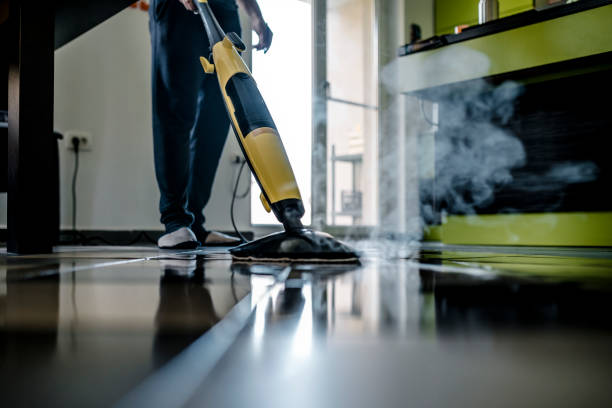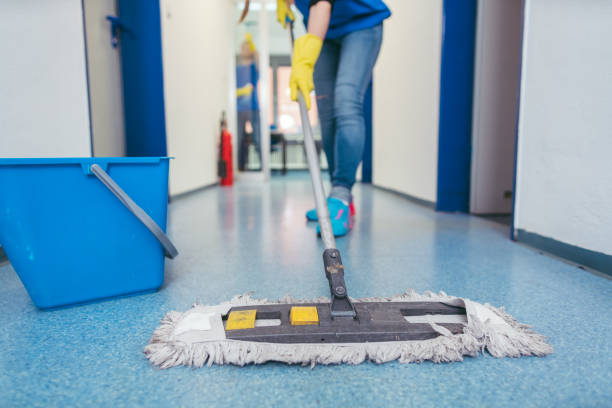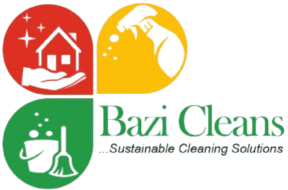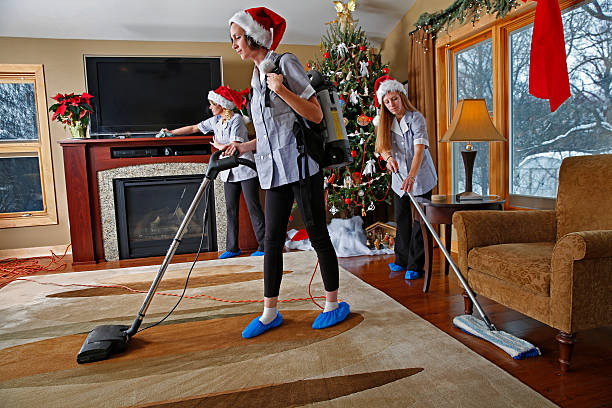A good mop choice plays a crucial role in maintaining the cleanliness of your floors. Whether you’re mopping up everyday messes or tackling deep-set grime, many households face the debate between steam mops and traditional mops. In this article, we will explore the pros and cons of both types, provide detailed comparisons, and help you make an informed decision based on your specific needs.
What Are Steam Mops and Traditional Mops?
Before diving into the comparisons, it’s important to understand each mop type’s basic mechanics and uses.
Steam Mops
Steam mops use water heated to a high temperature to create steam. This steam is released through a mop head, often made of microfiber. The steam loosens dirt, grime, and bacteria from your floors, making them easier to clean and sanitize. Steam mops are often praised for disinfecting surfaces without chemical cleaning solutions.

Traditional Mops
Traditional mops typically consist of a mop head made of cloth, sponge, or microfiber attached to a handle. These mops are used with a bucket of water mixed with a cleaning solution. You can manually scrub dirt and grime from your floors by soaking the mop head in the solution and wringing it out.

Key Considerations: Steam Mops vs. Traditional Mops
Cost
- Traditional Mops: These are generally the more affordable option. Basic models can cost as little as $10, with higher-end options rarely exceeding $50.
- Steam Mops: These can be a significant investment, ranging from $50 to over $200 for advanced models with multiple settings and features. For budget-conscious households, this upfront cost might be a deterrent.
Winner: Traditional mops are more cost-effective, especially for those on tight budgets.
Ease of Use
- Traditional Mops: Using a traditional mop involves more manual labour. You must prepare a bucket of water, mix in a cleaning solution, and repeatedly wring out the mop head while cleaning. This process can be physically demanding, especially for larger spaces.
- Steam Mops: Steam mops are designed to simplify the cleaning process. They don’t require a separate bucket or cleaning solution, and their lightweight design often makes them easier to manoeuvre. A steam mop can be a game-changer for those with limited mobility or strength.
Winner: Steam mops offer greater ease of use.
Effectiveness in Cleaning
- Traditional Mops: These are effective for cleaning up everyday messes but may struggle with deep-seated grime and stains. The cleaning power largely depends on the cleaning solution used and the effort put into scrubbing.
- Steam Mops: Steam mops excel at tackling tough stains and grime. The high-temperature steam loosens dirt and kills bacteria and viruses, providing a more sanitary clean. However, they are less effective on textured floors or surfaces with deep grooves.
Winner: Steam mops provide a more thorough clean for most surfaces.
Floor Compatibility
- Traditional Mops: These are safe for almost all floor types, including hardwood, laminate, tile, and vinyl. However, care must be taken to avoid excessive water on sensitive surfaces like hardwood.
- Steam Mops: While versatile, steam mops can damage certain floor types, particularly hardwood and laminate, due to heat and moisture. Always check the manufacturer’s recommendations before using a steam mop on these surfaces.
Winner: Traditional mops are more versatile across floor types.
Sanitization
- Traditional Mop Systems can effectively clean floors, but they don’t offer the same level of sanitization as steam mop systems. Cleaning solutions can kill some bacteria and viruses but often leave residues requiring rinsing.
- Steam Mops: Steam mops sanitize floors by killing up to 99.9% of bacteria and viruses without chemicals. This makes them an excellent choice for households with children, pets, or allergy sufferers.
Winner: Steam mops are superior for sanitization.
Environmental Impact
- Traditional Mops: These require cleaning solutions, often containing chemicals that can harm the environment. Additionally, the water used can be significant, especially for larger spaces.
- Steam Mops: Steam mops use only water, eliminating the need for chemical cleaners and offering an eco-friendly cleaning alternative.
Winner: Steam mops are more eco-friendly.
Pros and Cons of Each Mop Type
Traditional Mops
Pros:
- Affordable
- Safe for most floor types
- Low maintenance
- No power source required
Cons:
- Labour-intensive
- Requires cleaning solutions, which can be harmful
- Less effective at sanitizing
- Floors take longer to dry
Steam Mops
Pros:
- Easy to use
- Requires less physical effort
- Sanitizes floors effectively
- Dries floors quickly
- Eco-friendly
Cons:
- Higher upfront cost
- It may damage certain floor types
- Requires a power source
How to Use Each Mop Effectively
Using a Traditional Mop
- Prepare the Cleaning Solution: Mix your cleaning solution with warm water in a bucket. Follow the manufacturer’s instructions for dilution.
- Soak the Mop Head: Submerge the mop head in the solution, then wring it out to avoid excess water.
- Clean Thoroughly: Mop the floor, ensuring you cover all areas, including corners and under furniture.
- Rinse and Repeat: For heavily soiled areas, rinse the mop head in the bucket and repeat the process.
- Dry the Floor: Allow the floor to air dry and hang the mop to dry completely to prevent odours and bacteria growth.
Using a Steam Mop
- Fill the Reservoir: Add water to the steam mop’s reservoir following the recommended capacity.
- Heat the Water: Plug in the steam mop and wait for the water to heat. Most models have an indicator light to signal readiness.
- Begin Cleaning: Glide the steam mop across the floor in straight rows. Avoid lingering on one spot for too long to prevent damage.
- Finish Up: Once done, empty the reservoir and clean the mop pad per the manufacturer’s instructions.
Making the Right Choice for Your Home
Your choice of a steam mop versus a traditional mop will depend on your preferences and cleaning needs. Here are a few scenarios to guide your decision:
- Budget-Friendly Cleaning: A traditional mop is better if cost is a primary concern.
- Sanitization Needs: For households with young children, pets, or allergy sufferers, a steam mop’s ability to disinfect without chemicals makes it a valuable investment.
- Floor Type: Traditional mops are safer for hardwood and laminate floors, while steam mops excel on tile and other hard surfaces.
- Physical Limitations: A steam mop can ease the burden of traditional mopping, which is physically demanding.
Conclusion
Both steam mops and traditional mops have their unique advantages and disadvantages. While traditional mops offer affordability and versatility, steam mops provide superior sanitization and ease of use. You can determine which mop best suits your home by considering cost, ease of use, cleaning performance, floor compatibility, and environmental impact. Ultimately, the right choice depends on your cleaning needs and preferences.

